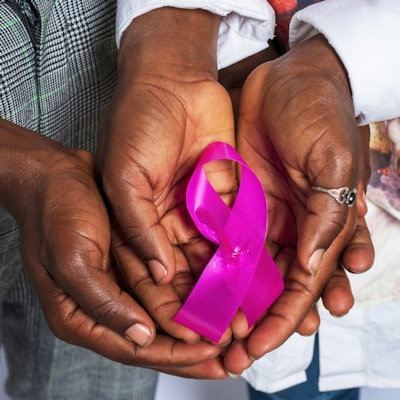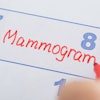
Younger Black and Hispanic women are more likely to present with a palpable breast lump than their older counterparts, according to research published September 24 in Clinical Imaging, a finding that may be due to their not undergoing breast screening.
A team led by Dr. Zi Zhang from Einstein Healthcare Network in Philadelphia suggested that this could be caused by the younger women being less likely to have prior screening mammograms when compared with the older cohort.
"Our data highlights the importance of starting screening mammography no later than age 40 in African-American and Hispanic women," Zhang et al wrote. "In addition, these women should have a risk assessment for breast cancer no later than age 30 and be screened appropriately."
Breast cancer risk assessment helps identify women who may benefit from more intensive breast cancer surveillance, as well as avoid applying average-risk screening recommendations to women who are at higher risk. However, racial disparities persist in the U.S. when it comes to cancer diagnosis, mortality, and survival.
Previous research suggests that Black and Hispanic women experience more delays in diagnosis and treatment compared to white women. Research also shows that Black women are diagnosed at a younger age and with a worse prognosis. Along with that, Black and Hispanic women are more often diagnosed at a more advanced stage and have a higher incidence of triple-negative breast cancer.
Zhang and colleagues noted that limitations in national survey databases "often" lead to overestimations in mammography use. This especially goes for women in low-income racial and ethnic minority groups, they wrote.
Therefore, the research team wanted to explore the diagnosis of breast cancer in inner-city Black and Hispanic women by age, as well as support the importance of screening in these women under the age of 50.
"Our study was limited to African American and Hispanic women, because our inner-city public hospital is located in an African American and Hispanic community as part of a public benefit corporation," they added.
The researchers looked at retrospective data from a total of 115 women who presented between 2015 and 2019. Out of the total, 72 identified as Black, 36 as Hispanic, and the remaining seven as "Other."
Sixty women (56%) presented with a site of palpable concern for diagnostic workup, while the remaining women were diagnosed through asymptomatic screening.
| Comparison of younger Black and Hispanic women with older women in mammography attendance and findings | |||
| Women ages 30 to 49 | Women ages 50 to 69 | p-values | |
| Site of palpable concern | 68% | 44% | 0.045 |
| Presence of triple-negative breast cancer | 20% | 10% | 0.222* |
| Mammography attendance | 24% | 46% | 0.062* |
Younger women also had higher rates for the presence of triple-negative breast cancer, although the difference compared to older women did not achieve statistical significance. The difference in mammography attendance between the two groups also did not achieve statistical significance.
The team acknowledged that the mammography attendance numbers could be because there are no current recommendations for average-risk women aged 30 to 39. Most national guidelines recommend beginning breast cancer screening at age 40, with risk assessment to be done at age 30.
Researchers also found that 45 women (42%) from the study population had at least one prior screening mammogram in the past three years, based on preexam clinical questionnaires. They noted decreased rates seen in younger groups.
Additionally, 71 of the women had invasive ductal carcinoma, with the highest incidence seen in the 40 to 49 age group, and 14 women had triple-negative breast cancer.
The study authors suggested that confusion from varied screening recommendations could be a cause of delay in screening for women under 50 years of age. They cited previous research suggesting that uninsured women and recent immigrants reported the lowest prevalence in mammography use in recent years.
"Given the aggressive nature of breast cancer in young African-American and Hispanic women, early risk assessment to identify women at higher risk would allow for referral for genetic counseling and testing, as well as patient counseling about risk-reduction options," the authors wrote.




















